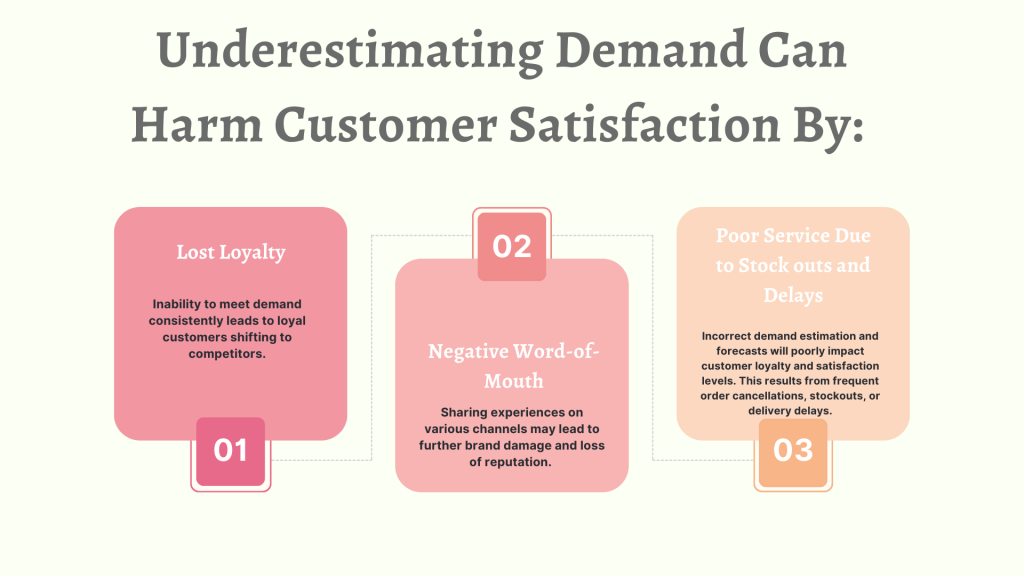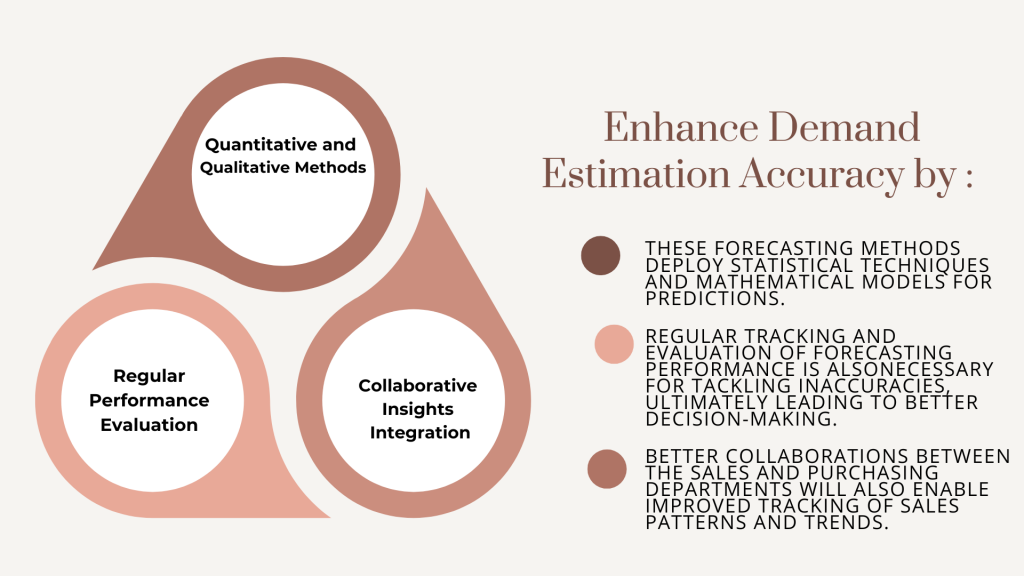
Incorrect demand estimation is the proverbial blow that comes just when a business is least expecting it. No, the attempt is not to be dramatic here, but to illustrate how proper demand estimation is crucial for the long-term growth and sustainability of any business. Supply and demand volatility and external factors already make demand forecasting highly challenging.
Fluctuations in demand from the last year are not enough while consumer behavioral shifts keep happening, making it harder to assume anything. So what can be a feasible solution? Companies can rely on quantitative insights and other forecasting tools to improve their demand estimation rates. Let us look closely at these aspects in this article.
The cost of incorrect demand estimation will naturally be immensely high for any business. While putting a number to it is difficult, picture a scenario where there are either stockouts or overstocking.
This may lead to excess costs of carrying, rush orders, higher shipping costs, and operational expenditure. Automatically, they all combine to lower profit margins for businesses, thereby directly hitting at financial performance figures. A few examples of incorrect demand forecasts will help you understand the cost at stake.
Would you call these costly forecasting mistakes? You bet! And when it comes to running a company, the costs include the following:
As can be seen, incorrect demand estimation can be disastrous for companies in diverse sectors. Let us now look at how it impacts customer satisfaction levels as well.
Incorrect demand estimation can have a negative impact on customer satisfaction levels. Here are some pointers that are worth noting in this context.

In today’s era of hyper-personalisation in customer service, such scenarios can adversely impact any brand. Here is how the accuracy of demand forecasts can be improved.
Fixing incorrect demand estimation and scaling up the accuracy levels of forecasts is possible with the help of several techniques. These include the following:

Companies can consider suitable demand forecasting tools driven by artificial intelligence and machine learning. It will help them monitor progress with complete visibility into the process. Advanced data capture and analysis will unearth invaluable insights that lead to better forecasts and decision-making alike. These tools also enable forecasts that are more accurate, since they consider promotions, trends, seasonality, and variance in demand.
Analysis and insights into multiple demand scenarios based on major variables will help companies respond suitably to evolving trends. AI and big data analytics will swiftly process unstructured and structured data in massive chunks from various sources. This will include social media data, market trends, sales records, customer data, and more. AI-based algorithms will help companies identify complex trends and patterns, while predictive models can be generated after learning from historical data.
Real-time analysis of incoming data will help enhance awareness of new patterns and enable updated forecasts likewise. Businesses can segment demand and consumer groups for better marketing strategies and inventory management alike. Going by the recent trends, AI, ML, and analytics will play a big role in helping companies combat inaccurate demand estimation while positively impacting bottomlines eventually.
1.The Impact of Incorrect Demand Estimation on Marketing Strategy
Incorrect demand estimation impacts marketing strategy in several ways. Overestimation may lead to more investments in inventory and production capacity in some categories. This may lead to marketing teams missing out on high-demand or trending products. Poor forecasting hinders the abilities of companies to accurately predict when any particular product will be most popular. This will lead to a loss of marketing opportunities.
2.How Incorrect Demand Estimation Can Affect Brand Reputation
Brand reputation is adversely affected by incorrect demand estimation. Customers will feel dissatisfied about higher order cancellations, delivery delays, and about the brand not meeting their needs at the right time. They may spread this negative perception through word-of-mouth. At the same time, failure to anticipate customer buying habits and trends will lead to inventory undersupply or oversupply, leading to customers shifting to market competitors.
3.The Impact of Incorrect Demand Estimation on Corporate Social Responsibility
Incorrect demand estimation can also have an impact on the corporate social responsibility (CSR) initiatives of the company. With incorrect forecasts leading to higher resource allocation on unnecessary inventory and subsequent losses throughout the entire operational and supply chain networks, companies will naturally have to slash corporate social responsibility budgets. At the same time, poor brand image and reputation will also impact these initiatives greatly.